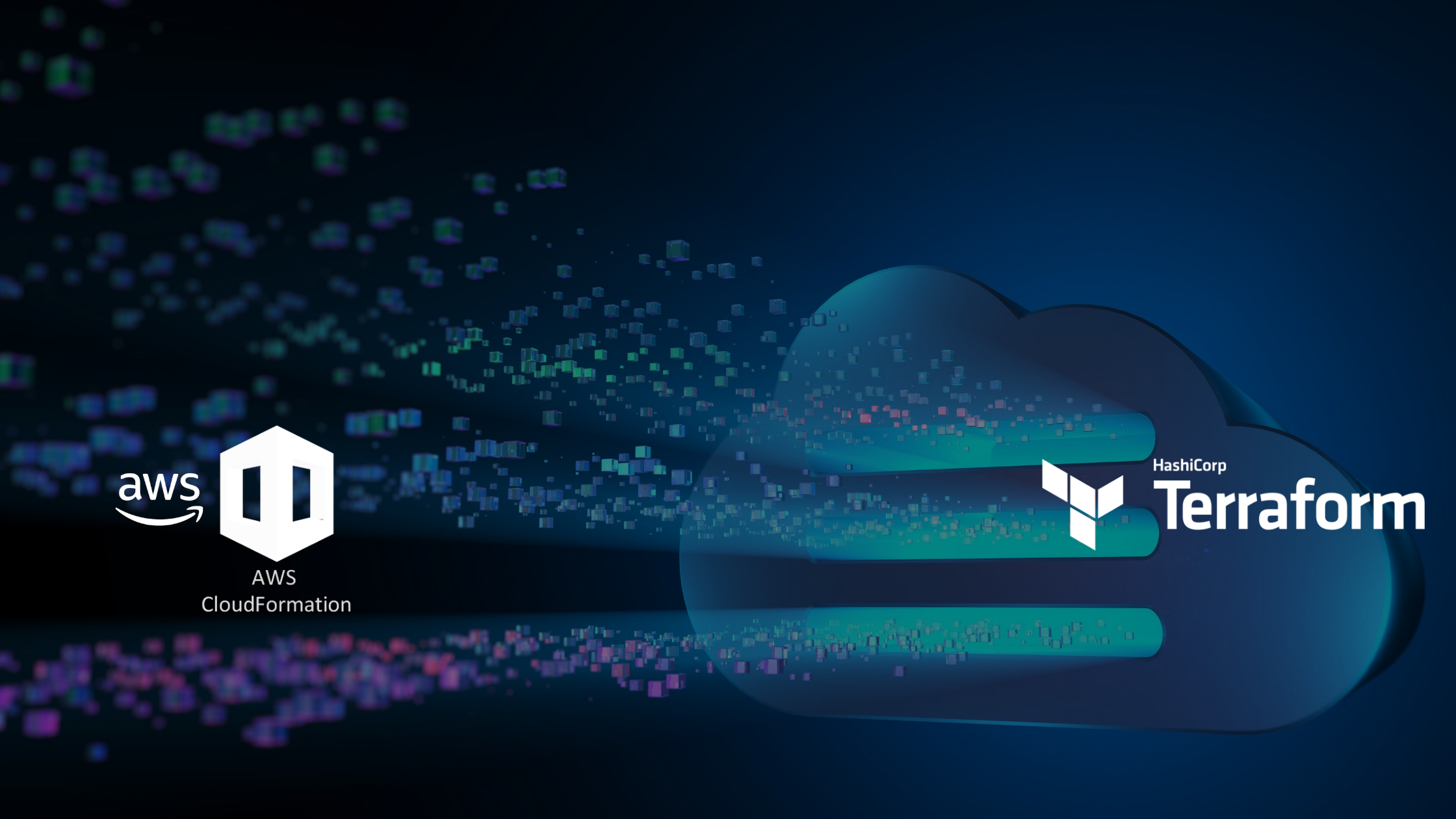Code-based infrastructure is on the rise. Essentially, it means that you’re deploying IT on servers and managing it as software instead of as hardware. Instead of buying or configuring individual servers, which may be an up-front cost but later require subsequent costs for upkeep and maintenance, you can simply use another server with your virtual environment – it’s easier to upgrade this way.
AWS has a tool named CloudFormation, which is used for provisioning and managing EC2 instances along with storage devices, security features, and networking components. There is also an open-source alternative called Terraform. This article will go over the differences and similarities between these two tools and provide you with information to help you choose the right one for your business needs.
AWS CloudFormation
AWS CloudFormation refers to an AWS service that changes how you manage your cloud infrastructure, providing security and ensuring that your enterprise cloud environment is efficient. In addition, you can build AWS or third-party apps easier with this framework, allowing you to view the entire deployment library as one unit of the whole application.
CloudFormation allows individuals and teams to quickly provide a well-defined application stack that can create predictable destruction of cloud-provided resources accurately and predictably, enabling teams to change their infrastructure more efficiently.
Terraform
Terraform is an open-source software tool for managing several remote cloud services simultaneously while allowing users to control their configurations more effectively. Terraform will enable clients to devise plans that interface with each service’s specific configuration parameters, then automatically generate documentation-compliant responses.
This open-source software tool was built by HashiCorp and helped users set up and provision data center infrastructure. In Terraform, APIs are codified into declarative configurations that team members can share, edit, review, and version.
State management
The Amazon CloudFormation service allows users to track and report on changes to provisioned infrastructure. It is possible, for instance, to change some parameters of an AWS resource without destroying or rebuilding some help, but some parameters must be reconstructed. AWS CloudFormation will determine if dependency on the resource exists before it deletes the resource.
The Terraform infrastructure state is stored locally on the working computer or remotely (for team access). A Terraform state file describes which service manages resources and how they are configured. The state file is in JSON format.
AWS CloudFormation won’t stop the deployment if it suddenly realizes that one of your provisioned resources has become unavailable. On the other hand, Terraform will roll back the deployment to the last update if there is a glitch.
Language
Terraform is written in HashiCorp Configuration Language, HCL, while AWS CloudFormation is written in JSON or YAML. Overall, YAML is an easier format than JSON because it has fewer requirements and it’s far more readable. However, there’s still one thing that you must watch out for, and that’s indentation because things go wrong if you mess up. HCL only has a handful of validators, and they all enforce basic formatting requirements. This helps developers to go through the most fundamental parts of their projects quickly.
Modularity
Terraform helps developers create reusable templates by allowing them to keep their code in self-contained modules. Since the templates are maintained at high levels, you can quickly build your infrastructure without being bogged down by details.
Nested stacks are used in CloudFormation, allowing a templated way to create or change infrastructure resources. You can call one template within another, which becomes even more complex if multiple templates call each other. Stack sets help with this by following some extra guidelines to ensure everything runs smoothly without human error.
Compared with CloudFormation, Terraform is more module-centric. Companies can create their modules or pull in modules from any provider who supports them.
Configuration
Terraform works with data providers of all kinds responsible for returning the data required to describe the managed infrastructure. This is done modularly, allowing users to use data and functionality outside Terraform to generate or retrieve information that Terraform then uses to update or provision infrastructure.
CloudFormation has a limit of 200 parameters (previously 60) for every template. Each of these parameters is referenced by an ‘id’ you choose for it at the time of creation, and CloudFormation uses this id to recognize which variables are which when they appear in templates. The different variable ids are handy when your templates start growing in size since it’s easy to spot the IDs in place of total words when writing them into template language. This makes writing these templates much easier when using dynamics id’s that change with every loop statement, etc. – hopefully making it easier for new users to get up to speed more quickly.
In a nutshell, neither tool is inferior to the other when it comes to managing cloud infrastructure. AWS CloudFormation might be a better choice if you already use AWS tools and want no external ties to 3rd parties. On the other hand, Terraform might be more valuable for you if you are interested in integrating a platform that works across multiple cloud providers.
With Cloudride, you can rest easy knowing that we work with cloud providers to help you choose the solution that meets your needs. We will assist you in finding the best performance, high security, and cost-saving cloud solutions to maximize business value.


